
Keywords: model

|
MGDrivE 3: A decoupled vector-human framework for epidemiological simulation of mosquito genetic control tools and their surveillanceA. Mondal, C. H. M. Sanchez and J. M. Marshall, bioRxiv, 2023.09.09.556958. 2023.
We present MGDrivE 3 (Mosquito Gene Drive Explorer 3), a new version of a previously-developed framework, MGDrivE 2, that investigates the spatial population dynamics of mosquito genetic control systems and their epidemiological implications. The new framework incorporates three ... Keywords: gene drive synthetic, model, mosquitoes, predator–prey |

|
A migration-selection model in genetic engineeringY. Qi and L. Su, Nonlinear Analysis: Real World Applications, 75:103983. 2023.
We investigate a migration-selection system arising from CRISPR-Cas9 genetic engineering, which describes the evolution of the frequencies of a wild allele O, a drive allele D, and a brake allele B. The purpose is to see whether the drive allele D can persist in the population ... Keywords: gene drive synthetic, model, mosquitoes, predator–prey |
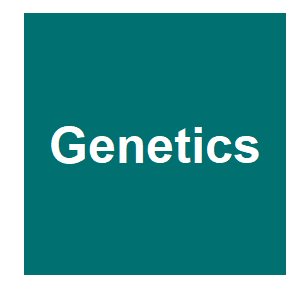
|
Female meiotic drive shapes the distribution of rare inversion polymorphisms in Drosophila melanogasterS. A. Koury, Genetics, 2023.
In all species, new chromosomal inversions are constantly being formed by spontaneous rearrangement and then stochastically eliminated from natural populations. In Drosophila, when new chromosomal inversions overlap with a pre-existing inversion in the population, their rate of ... Keywords: gene drive synthetic, model, mosquitoes, predator–prey |

|
Gene drives for invasive wasp control: Extinction is unlikely, with suppression dependent on dispersal and growth ratesP. J. Lester, D. O'Sullivan and G. L. W. Perry, Ecological Applications, 2023.
Abstract Gene drives offer a potentially revolutionary method for pest control over large spatial extents. These genetic modifications spread deleterious variants through a population and have been proposed as methods for pest suppression or even eradication. We examined the ... Keywords: gene drive synthetic, model, mosquitoes, predator–prey |

|
The impact of predators of mosquito larvae on Wolbachia spreading dynamicsZ. Zhu, Y. Hui and L. Hu, Journal of Biological Dynamics, 17:2249024. 2023.
Dengue fever creates more than 390 million cases worldwide yearly. The most effective way to deal with this mosquito-borne disease is to control the vectors. In this work we consider two weapons, the endosymbiotic bacteria Wolbachia and predators of mosquito larvae, for combating ... Keywords: gene drive synthetic, model, mosquitoes, predator–prey |

|
Threshold dynamics of a stochastic mathematical model for Wolbachia infectionsJ. Yang, Z. Chen, Y. Tan, Z. Liu and R. A. Cheke, Journal of Biological Dynamics, 17:2231967. 2023.
A stochastic mathematical model is proposed to study how environmental heterogeneity and the augmentation of mosquitoes with Wolbachia bacteria affect the outcomes of dengue disease. The existence and uniqueness of the positive solutions of the system are studied. Then the ... Keywords: gene drive synthetic, model, mosquitoes, predator–prey |

|
MGSurvE: A framework to optimize trap placement for genetic surveillance of mosquito populationC. H. Sánchez, D. L. Smith and J. M. Marshall, bioRxiv, 2023.
Genetic surveillance of mosquito populations is becoming increasingly relevant as genetics-based mosquito control strategies advance from laboratory to field testing. Especially applicable are mosquito gene drive projects, the potential scale of which leads monitoring to be a ... Keywords: gene drive synthetic, model, mosquitoes, predator–prey |

|
Modeling emergence of Wolbachia toxin-antidote protein functions with an evolutionary algorithmJ. Beckmann, J. Gillespie and D. Tauritz, Front Microbiol, 14:1116766. 2023.
Evolutionary algorithms (EAs) simulate Darwinian evolution and adeptly mimic natural evolution. Most EA applications in biology encode high levels of abstraction in top-down population ecology models. In contrast, our research merges protein alignment algorithms from ... Keywords: gene drive synthetic, model, mosquitoes, predator–prey |
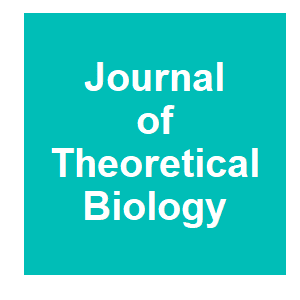
|
The optimal strategy of incompatible insect technique (IIT) using Wolbachia and the application to malaria controlT. Matsufuji and S. Seirin-Lee, Journal of Theoretical Biology, 569:111519. 2023.
For decades, techniques to control vector population with low environmental impact have been widely explored in both field and theoretical studies. The incompatible insect technique (IIT) using Wolbachia, based on cytoplasmic incompatibility, is a technique that ... Keywords: gene drive synthetic, model, mosquitoes, predator–prey |

|
Adversarial interspecies relationships facilitate population suppression by gene drive in spatially explicit modelsY. Liu, W. Teo, H. Yang and J. Champer, Ecology Letters, 2023.
Abstract Suppression gene drives bias their inheritance to spread through a population, potentially eliminating it when they reach high frequency. CRISPR homing suppression drives have already seen success in the laboratory, but several models predict that success may be elusive ... Keywords: gene drive synthetic, model, mosquitoes, predator–prey |

|
Modelling Emergence of Wolbachia Toxin-Antidote Protein Functions with an Evolutionary AlgorithmJ. Beckmann, J. Gillespie and D. Tauritz, bioRxiv, 2023.
Evolutionary algorithms (EAs) simulate Darwinian evolution and adeptly mimic natural evolution. Most EA applications in biology encode high levels of abstraction in top-down ecological population models. In contrast, our research merges protein alignment algorithms from ... Keywords: gene drive synthetic, model, mosquitoes, predator–prey |
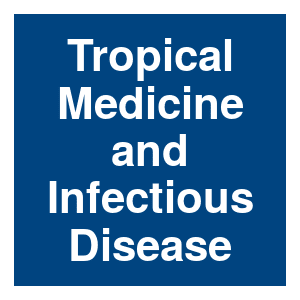
|
Modeling Sustained Transmission of Wolbachia among Anopheles Mosquitoes: Implications for Malaria Control in HaitiD. Florez, A. J. Young, K. J. Bernabé, J. M. Hyman and Z. Qu, Trop Med Infect Dis, 8. 2023.
Wolbachia infection in Anopheles albimanus mosquitoes can render mosquitoes less capable of spreading malaria. We developed and analyzed a mechanistic compartmental ordinary differential equation model to evaluate the effectiveness of Wolbachia-based vector control strategies ... Keywords: gene drive synthetic, model, mosquitoes, predator–prey |

|
A mosquito population suppression model with a saturated Wolbachia release strategy in seasonal successionZ. Zhang, L. Chang, Q. Huang, R. Yan and B. Zheng, J Math Biol, 86:51. 2023.
Releasing Wolbachia-infected male mosquitoes to suppress wild female mosquitoes through cytoplasmic incompatibility has shown great promise in controlling and preventing mosquito-borne diseases. To make the release logistically and economically feasible, we propose a saturated ... Keywords: gene drive synthetic, model, mosquitoes, predator–prey |

|
Dynamics of an impulsive reaction-diffusion mosquitoes model with multiple control measuresY. Li, H. Zhao and K. Wang, Mathematical Biosciences and Engineering, 20:775-806. 2023.
It is well-known that mosquito control is one of the effective methods to reduce and prevent the transmission of mosquito-borne diseases. In this paper, we formulate a reaction-diffusion impulsive hybrid model incorporating Wolbachia, impulsively spraying of insecticides, spatial ... Keywords: gene drive synthetic, model, mosquitoes, predator–prey |

|
Gene drive designs for efficient and localisable population suppression using Y-linked editorsR. Geci, K. Willis and A. Burt, PLOS Genetics, 18:e1010550. 2022.
Author summary Some pest populations can be successfully controlled by the inundative release of sterile males, but this approach is not practicable when the target population is large or the species difficult to rear. Computer modelling has previously demonstrated that releasing ... Keywords: gene drive synthetic, model, mosquitoes, predator–prey |

|
Monotonicity properties arising in a simple model of Wolbachia invasion for wild mosquito populationsD. Vicencio, O. Vasilieva and P. Gajardo, Mathematical Biosciences and Engineering, 20:1148-1175. 2022.
Using tools borrowed from monotone dynamical system theory, in the proposed model, we prove the existence of an invariant threshold manifold that allows us to provide practical recommendations for performing single and periodic releases of Wolbachia-carrying mosquitoes, seeking ... Keywords: gene drive synthetic, model, mosquitoes, predator–prey |

|
Pulled, pushed or failed: the demographic impact of a gene drive can change the nature of its spatial spreadL. Kläy, L. Girardin, V. Calvez and F. Débarre, arXiv, 2022.
Understanding the temporal spread of gene drive alleles -- alleles that bias their own transmission -- through modeling is essential before any field experiments. In this paper, we present a deterministic reaction-diffusion model describing the interplay between demographic and ... Keywords: gene drive synthetic, model, mosquitoes, predator–prey |

|
An optimal control problem for dengue transmission model with Wolbachia and vaccinationJ. Zhang, L. L. Liu, Y. Z. Li and Y. Wang, Communications In Nonlinear Science and Numerical Simulation, 116. 2022.
The release of Wolbachia-infected mosquitoes into the wild mosquitoes population is an excellent biological control strategy which can be effective against mosquito-borne infections. In this work, we propose a dengue transmission model that incorporates releasing Wolbachia into ... Keywords: gene drive synthetic, model, mosquitoes, predator–prey |

|
A confinable female-lethal population suppression system in the malaria vector, Anopheles gambiaeA. L. Smidler, J. J. Pai, R. A. Apte, H. M. Sánchez C, R. M. Corder, E. J. Gutiérrez, N. Thakre, I. Antoshechkin, J. M. Marshall and O. S. Akbari, bioRxiv, 2022.08.30.505861. 2022.
Malaria is among the world’s deadliest diseases, predominantly affecting sub-Saharan Africa, and killing over half a million people annually. Controlling the principal vector, the mosquito Anopheles gambiae, as well as other anophelines, is among the most effective methods to ... Keywords: gene drive synthetic, model, mosquitoes, predator–prey |

|
Gene drive designs for efficient and localisable population suppression using Y-linked editorsR. Geci, K. Willis and A. Burt, bioRxiv, 2022.06.29.498122. 2022.
The sterile insect technique (SIT) has been successful in controlling some pest species but is not practicable for many others due to the large numbers of individuals that need to be reared and released. Previous computer modelling has demonstrated that the release of males ... Keywords: gene drive synthetic, model, mosquitoes, predator–prey |

|
The suppressive potential of a gene drive in populations of invasive social wasps is currently limitedA. B. Meiborg, N. R. Faber, B. A. Taylor, B. A. Harpur and G. Gorjanc, bioRxiv, 2022.06.27.497711. 2022.
Social insects are very successful invasive species, and the continued increase of global trade and transportation has exacerbated this problem. The yellow-legged hornet, Vespa velutina nigrithorax (henceforth Asian hornet), is drastically expanding its range in Western Europe. ... Keywords: gene drive synthetic, model, mosquitoes, predator–prey |

|
DriverSEAT: A spatially-explicit stochastic modelling framework for the evaluation of gene drives in novel target speciesM. Legros and L. G. Barrett, bioRxiv, 2022.06.13.496025. 2022.
Gene drives represent a potentially ground breaking technology for the control of undesirable species or the introduction of desirable traits in wild population, and there is strong interest in applying these technologies to a wide range of species across many domains including ... Keywords: gene drive synthetic, model, mosquitoes, predator–prey |

|
Unbalanced selection: the challenge of maintaining a social polymorphism when a supergene is selfishA. G. Tafreshi, S. P. Otto and M. Chapuisat, Philos Trans R Soc Lond B Biol Sci, 377:20210197. 2022.
Supergenes often have multiple phenotypic effects, including unexpected detrimental ones, because recombination suppression maintains associations among co-adapted alleles but also allows the accumulation of recessive deleterious mutations and selfish genetic elements. Yet, ... Keywords: gene drive synthetic, model, mosquitoes, predator–prey |

|
Mitotic exchange in female germline stem cells is the major source of Sex Ratio chromosome recombination in Drosophila pseudoobscuraS. Koury, bioRxiv, 2022.06.07.495109. 2022.
Sex Ratio chromosomes in Drosophila pseudoobscura are selfish X chromosome variants associated with three non-overlapping inversions. In the male germline, Sex Ratio chromosomes distort segregation of X and Y chromosomes (99:1), thereby skewing progeny sex ratio. In the female ... Keywords: gene drive synthetic, model, mosquitoes, predator–prey |
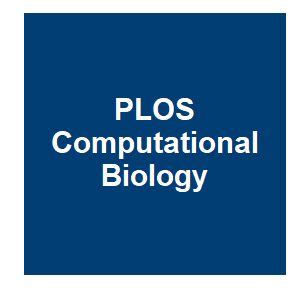
|
Spatial modelling for population replacement of mosquito vectors at continental scaleN. J. Beeton, A. Wilkins, A. Ickowicz, K. R. Hayes and G. R. Hosack, PLOS Computational Biology, 18:e1009526. 2022.
Malaria is one of the deadliest vector-borne diseases in the world. Researchers are developing new genetic and conventional vector control strategies to attempt to limit its burden. Novel control strategies require detailed safety assessment to ensure responsible and successful ... Keywords: gene drive synthetic, model, mosquitoes, predator–prey |
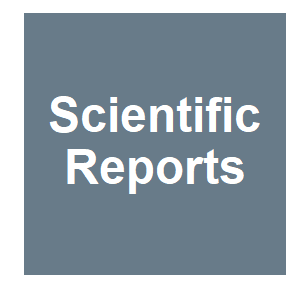
|
Modeling the impact of genetically modified male mosquitoes in the spatial population dynamics of Aedes aegyptiM. R. da Silva, P. H. G. Lugão, F. Prezoto and G. Chapiro, Scientific Reports, 12:9112. 2022.
The mosquito Aedes aegypti is the primary vector of diseases such as dengue, Zika, chikungunya, and yellow fever. Improving control techniques requires a better understanding of the mosquito’s life cycle, including spatial population dynamics in endemic regions. One of the most ... Keywords: gene drive synthetic, model, mosquitoes, predator–prey |
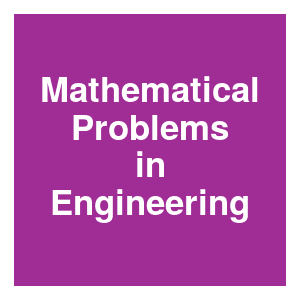
|
Combined Trojan Y Chromosome Strategy and Sterile Insect Technique to Eliminate Mosquitoes: Modelling and AnalysisJ. Lyu, M. Gu, S. Wang and K. Cheng, Mathematical Problems in Engineering, 2022:2373350. 2022.
Sterile insect technique has been successfully applied in the control of agricultural pests; however, it has a limited ability to control mosquitoes. A promising alternative approach is the Trojan Y Chromosome strategy, which works by manipulating the sex ratio of a population ... Keywords: gene drive synthetic, model, mosquitoes, predator–prey |

|
The sterile insect technique is protected from evolution of mate discriminationJ. J. Bull and R. Gomulkiewicz, PeerJ, 10:e13301. 2022.
Background The sterile insect technique (SIT) has been used to suppress and even extinguish pest insect populations. The method involves releasing artificially reared insects (usually males) that, when mating with wild individuals, sterilize the broods. If administered on a large ... Keywords: gene drive synthetic, model, mosquitoes, predator–prey |

|
Mathematical modelling to assess the feasibility of Wolbachia in malaria vector biocontrolS. Andreychuk and L. Yakob, Journal of Theoretical Biology, 542. 2022.
Releasing mosquitoes transinfected with the endosymbiotic bacterium Wolbachia is a novel strategy for interrupting vector-borne pathogen transmission. Following its success in controlling arboviruses spread by Aedes aegypti, this technology is being adapted for anopheline malaria ... Keywords: gene drive synthetic, model, mosquitoes, predator–prey |

|
Spatial modelling for population replacement of mosquito vectors at continental scaleN. J. Beeton, A. Wilkins, A. Ickowicz, K. R. Hayes and G. R. Hosack, bioRxiv, 2021.10.06.463299. 2022.
Malaria is one of the deadliest vector-borne diseases in the world. Researchers are developing new genetic and conventional vector control strategies to attempt to limit its burden. Novel control strategies require detailed safety assessment to ensure responsible and successful ... Keywords: gene drive synthetic, model, mosquitoes, predator–prey |

|
Rescue by gene swamping as a gene drive deployment strategyK. D. Harris and G. Greenbaum, bioRxiv, 2022.03.08.483503. 2022.
Gene drives are genetic constructs that can spread deleterious alleles with potential application to population suppression of harmful species. Given that a gene drive can potentially spill over to other populations or even other species, control measures and fail-safes ... Keywords: gene drive synthetic, model, mosquitoes, predator–prey |

|
Gene drives and population persistence vs elimination: The impact of spatial structure and inbreeding at low densityP. J. Beaghton and A. Burt, Theoretical Population Biology, 2022.
Synthetic gene drive constructs are being developed to control disease vectors, invasive species, and other pest species. In a well-mixed random mating population a sufficiently strong gene drive is expected to eliminate a target population, but it is not clear whether the same ... Keywords: gene drive synthetic, model, mosquitoes, predator–prey |

|
A gene drive does not spread easily in populations of the honey bee parasite Varroa destructorN. R. Faber, A. B. Meiborg, G. R. McFarlane, G. Gorjanc and B. A. Harpur, Apidologie, 52:1112-1127. 2022.
Varroa mites (Varroa destructor) are the most significant threat to beekeeping worldwide. They are directly or indirectly responsible for millions of colony losses each year. Beekeepers are somewhat able to control varroa populations through the use of physical and chemical ... Keywords: gene drive synthetic, model, mosquitoes, predator–prey |
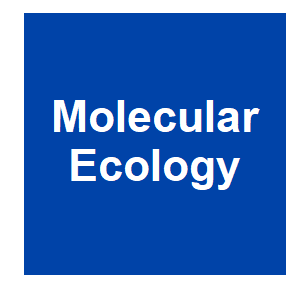
|
Gene drives for vertebrate pest control: realistic spatial modelling of eradication probabilities and times for island mouse populationsA. Birand, P. Cassey, J. V. Ross, J. C. Russell, P. Thomas and T. A. A. Prowse, Molecular Ecology, 2022.
Abstract Invasive alien species continue to threaten global biodiversity. CRISPR-based gene drives, which can theoretically spread through populations despite imparting a fitness cost, could be used to suppress or eradicate pest populations. We develop an individual-based, ... Keywords: gene drive synthetic, model, mosquitoes, predator–prey |

|
Cytoplasmic incompatibility in hybrid zones: infection dynamics and resistance evolutionE. S. Røed and J. Engelstädter, Journal of Evolutionary Biology, 2021.
Cytoplasmic incompatibility is an endosymbiont-induced mating incompatibility common in arthropods. Unidirectional cytoplasmic incompatibility impairs crosses between infected males and uninfected females, whereas bidirectional cytoplasmic incompatibility occurs when two host ... Keywords: gene drive synthetic, model, mosquitoes, predator–prey |

|
Weakly deleterious natural genetic variation amplifies probability of resistance in multiplexed gene drive systemsB. S. Khatri and A. Burt, bioRxiv, 2021.12.23.473701. 2021.
Evolution of resistance is a major barrier to successful deployment of gene drive systems to suppress natural populations. Multiplexed guide RNAs that require resistance mutations in all target cut sites is a promising strategy to overcome resistance. Using novel stochastic ... Keywords: gene drive synthetic, model, mosquitoes, predator–prey |

|
Gene drives and population persistence vs elimination: the impact of spatial structure and inbreeding at low densityP. J. Beaghton and A. Burt, bioRxiv, 2021.11.11.468225. 2021.
Synthetic gene drive constructs are being developed to control disease vectors, invasive species, and other pest species. In a well-mixed random mating population a sufficiently strong gene drive is expected to eliminate a target population, but it is not clear whether the same ... Keywords: gene drive synthetic, model, mosquitoes, predator–prey |

|
Modeling the efficacy of CRISPR gene drive for schistosomiasis controlR. E. Grewelle, J. Perez-Saez, J. Tycko, E. K. O. Namigai, C. G. Rickards and G. A. De Leo, bioRxiv, 2021.10.29.466423. 2021.
CRISPR gene drives could revolutionize the control of infectious diseases by accelerating the spread of engineered traits that limit parasite transmission in wild populations. While much effort has been spent developing gene drives in mosquitoes, gene drive technology in molluscs ... Keywords: gene drive synthetic, model, mosquitoes, predator–prey |

|
A gene drive does not spread easily in populations of the honey bee parasite Varroa destructorN. R. Faber, A. B. Meiborg, G. R. McFarlane, G. Gorjanc and B. A. Harpur, Apidologie, 2021.
Varroa mites (Varroa destructor) are the most significant threat to beekeeping worldwide. They are directly or indirectly responsible for millions of colony losses each year. Beekeepers are somewhat able to control varroa populations through the use of physical and chemical ... Keywords: gene drive synthetic, model, mosquitoes, predator–prey |

|
Spatial modelling for population replacement of mosquito vectors at continental scaleN. J. Beeton, A. Wilkins, A. Ickowicz, K. R. Hayes and G. R. Hosack, bioRxiv, 2021.10.06.463299. 2021.
We explore transmission of the gene drive between the subspecies, different hybridisation mechanisms, the effects of both local dispersal and potential wind-aided migration to the spread, and the development of resistance to the gene drive. We find that given best current ... Keywords: gene drive synthetic, model, mosquitoes, predator–prey |

|
Discrete dynamical models on Wolbachia infection frequency in mosquito populations with biased release ratiosY. Shi and B. Zheng, Journal of Biological Dynamics, 2021.
We develop two discrete models to study how supplemental releases affect the Wolbachia spreading dynamics in cage mosquito populations. The first model focuses on the case when only infected males are released at each generation. This release strategy has been proved to be ... Keywords: gene drive synthetic, model, mosquitoes, predator–prey |

|
The effect of mating complexity on gene drive dynamicsP. Verma, R. G. Reeves, S. Simon, M. Otto and C. S. Gokhale, bioRxiv, 2021.09.16.460618. 2021.
Gene drive technology is being presented as a means to deliver on some of the global challenges humanity faces today in healthcare, agriculture and conservation. However, there is a limited understanding of the consequences of releasing self-perpetuating transgenic organisms into ... Keywords: gene drive synthetic, model, mosquitoes, predator–prey |
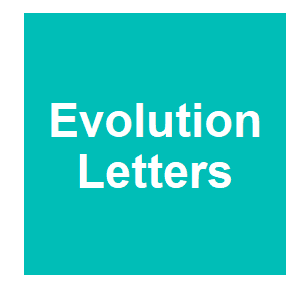
|
Evolutionary robustness of killer meiotic drivesP. G. Madgwick and J. B. Wolf, Evolution Letters, 2021.
A meiotic driver is a selfish genetic element that interferes with the process of meiosis to promote its own transmission. The most common mechanism of interference is gamete killing, where the meiotic driver kills gametes that do not contain it. A killer meiotic driver is ... Keywords: gene drive synthetic, model, mosquitoes, predator–prey |

|
Gene drive escape from resistance depends on mechanism and ecologyF. Cook, J. J. Bull and R. Gomulkiewicz, bioRxiv, 2021.08.30.458221. 2021.
Gene drives can potentially be used to suppress pest populations, and the advent of CRISPR technology has made it feasible to engineer them in many species, especially insects. What remains largely unknown for implementations is whether anti-drive resistance will evolve to block ... Keywords: gene drive synthetic, model, mosquitoes, predator–prey |

|
Sterile males and females can synergistically suppress wild pests targeted by sterile insect techniqueY. Ikegawa, K. Ito, C. Himuro and A. Honma, Journal of Theoretical Biology, 530. 2021.
We constructed a mathematical model to examine the contribution of sterile males and females to the pest-control effect and the synergy between them. We consider that males seek out and court females in accord with their own female searching ability and preference, and that ... Keywords: gene drive synthetic, model, mosquitoes, predator–prey |

|
Simulating effects of fitness and dispersal on the use of Trojan sex chromosomes for the management of invasive speciesC. C. Day, E. L. Landguth, R. K. Simmons, W. P. Baker, A. R. Whiteley, P. M. Lukacs and A. Bearlin, Journal of Applied Ecology, 2020.
The use of Trojan Y chromosomes (TYC) for controlling invasive species involves manipulating the sex chromosomes of captive-raised individuals. Following release, the offspring of these individuals consist of only one sex, thereby skewing the sex ratio of the invasive population ... Keywords: gene drive synthetic, model, mosquitoes, predator–prey |
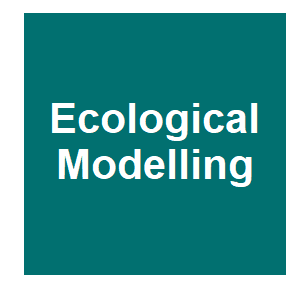
|
Optimal control and analysis of a modified trojan Y-Chromosome strategyM. A. Beauregard, R. D. Parshad, S. Boon, H. Conaway, T. Griffin and J. J. Lyu, Ecological Modelling, 416. 2020.
The Trojan Y Chromosome (TYC) strategy is a promising eradication method that attempts to manipulate the female to male ratio to promote the reduction of the population of an invasive species. The manipulation stems from an introduction of sex-reversed males, called supermales, ... Keywords: gene drive synthetic, model, mosquitoes, predator–prey |
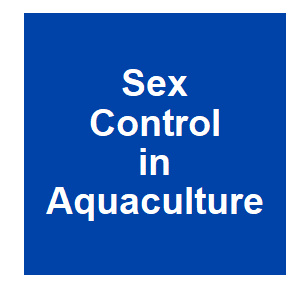
|
Population Consequences of Releasing Sex-Reversed Fish: Applications and ConcernsC. Wederkind, Sex Control in Aquaculture, Chp 8:179-188. 2018.
Sex differentiation is generally more labile in gonochoristic fish than it is, for example, in birds and mammals. Environmentally induced sex reversal is, therefore, often possible, and creates genotype‐phenotype mismatches that can be useful in population management. ... Keywords: gene drive synthetic, model, mosquitoes, predator–prey |

|
The optimal implementation of the Trojan Y chromosome eradication strategy of invasive speciesM. R. Kelly and X. Y. Wang, Journal of Biological Systems, 25:399-418. 2017.
Invasive aquatic species continue to be a persistent problem around the world. The Trojan Y Chromosome (TYC) eradication strategy has recently been developed to help fight the problem in aquatic systems by targeting only the invasive species, sparing native marine stock. It ... Keywords: gene drive synthetic, model, mosquitoes, predator–prey |

|
Analysis of the Trojan Y-Chromosome eradication strategy for an invasive speciesX. Y. Wang, J. R. Walton, R. D. Parshad, K. Storey and M. Boggess, Journal of Mathematical Biology, 68:1731-1756. 2013.
The Trojan Y-Chromosome (TYC) strategy, an autocidal genetic biocontrol method, has been proposed to eliminate invasive alien species. In this work, we analyze the dynamical system model of the TYC strategy, with the aim of studying the viability of the TYC eradication and ... Keywords: gene drive synthetic, model, mosquitoes, predator–prey |

|
The Impact of Dissociation on Transposon-Mediated Disease Control StrategiesJ. M. Marshall, Genetics, 178:1673-1682. 2008.
Vector-borne diseases such as malaria and dengue fever continue to be a major health concern through much of the world. The emergence of chloroquine-resistant strains of malaria and insecticide-resistant mosquitoes emphasize the need for novel methods of disease control. ... Keywords: gene drive synthetic, model, mosquitoes, predator–prey |

Contact
David O’Brochta
Foundation for the
National Institutes of Health
geneconvenevi@fnih.org
RSS

